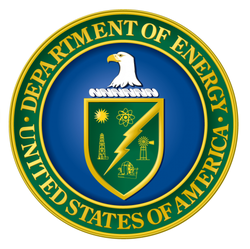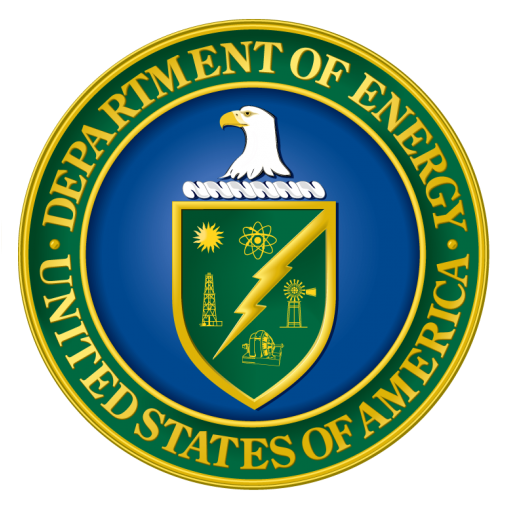
May 25, 2017
By: Michael Feldman
The FY 2018 Congressional budget request for the Department of Energy has been released, reflecting a White House that favors supercomputing infrastucture over scientific research. That turns out to be both good news and bad news for the HPC community.
 First the good news. Exascale computing did well in the budget request, with both the DOE’s Office of Science and National Nuclear Security Administration (NNSA) looking to get a generous influx of funding. In aggregate, the administration is requesting $508 million for exascale work for FY 2018. The DOE’s Office of Science would get $347 million of that, with the remaining $161 million going to the NNSA. In total, that would be $286 million more than the exascale funding enacted in FY 2016. Some of that would end up with going toward the Exascale Computing Project (ECP), the US initiative spearheading exascale technology, but the remainder would go for things like planning, site preparation, and non-recurring engineering costs.
First the good news. Exascale computing did well in the budget request, with both the DOE’s Office of Science and National Nuclear Security Administration (NNSA) looking to get a generous influx of funding. In aggregate, the administration is requesting $508 million for exascale work for FY 2018. The DOE’s Office of Science would get $347 million of that, with the remaining $161 million going to the NNSA. In total, that would be $286 million more than the exascale funding enacted in FY 2016. Some of that would end up with going toward the Exascale Computing Project (ECP), the US initiative spearheading exascale technology, but the remainder would go for things like planning, site preparation, and non-recurring engineering costs.
The intent is clear. The administration is committed to standing up its first exascale supercomputer in the US by 2021, a goal recently added by the Exascale Computing Project, followed by additional exascale systems in 2022 and beyond. Considering China’s stated goal to deploy such a system in 2020, the US probably won’t be the first nation to put an exascale machine into production, but it would at least avoid the prospect of a two- to three-year time gap.
Other good news is that the requested funding for the DOE’s Advanced Scientific Computing Research (ASCR) organization is $722 million, representing a 16.3 percent increase over FY 2016 levels. A lot of this money would go to the agency’s pre-exascale and exascale efforts, including the upcoming Summit supercomputer for Oak Ridge National Lab, a 200-petaflop machine that is expected to be built this year and become operational in the fourth quarter of 2017. Other Office of Science national labs, include Argonne and Lawrence Berkeley are in line to get early funding for future systems as well – Berkeley Lab for its upcoming NERSC-9 system, a pre-exascale supercomputer expected to be deployed in 2020, and Argonne for its future exascale system of “novel architecture.”
As noticed by our friends at The Next Platform, the budget request does not mention Aurora, a 180-petaflop supercomputer that was supposed to be built for Argonne National Lab in 2018. Whether plans have changed because of problems with Intel and its Knight Hill Xeon Phi processor on which the system was based, or because Argonne and DOE have had a change of heart about the system itself, is unclear.
As The Next Platform article points out, the budget request document does mention a different direction at Argonne, saying the next supercomputer upgrade will “shift toward an advanced architecture, particularly well-suited for machine learning applications capable of more than an exaflop performance when delivered.” That suggests the lab’s next machine, whether it’s called Aurora or not, may end up with Intel upcoming Lake Crest chip, a heterogeneous processor that combines Xeon silicon with Nervana’s machine learning engine. We’ll have to see how this develops.
The bad news for ASCR is that the budget for computing research has been cut. In FY 2016, it was $621 million, while the new budget request is for $525 million, representing a 15.4 percent reduction. In fact, the only reason ASCR comes out ahead overall is because of the $196 million in funding requested for the Exascale Computing Project. In FY 2016, no money was allocated for this work.
Looking at the bigger picture, the $4.7 billion funding request for Office of Science, of which ASCR is a part, was significantly smaller than the $5.3 billion in FY 2016. That’s represents a 16.4 percent decrease, and reflects across-the-board cutbacks in scientific research, including biological and environmental/climate research (-42.7 percent), fusion energy research (-23.4 percent), high energy physics research (-21.3 percent), and basic energy science research (-18.0 percent). Also cut would be funding for construction for various physics labs and infrastructure.
Turning to the classified side of the DOE, the NNSA fared well, with a $13.9 billion funding request, representing an 11.2 percent bump over the FY 2016 levels. The vast majority of this, though, is promised to weapons activities like stockpile maintenance. As mentioned before, the agency would get $161 million in preparation for exascale systems, in concert with the Office of Science effort. Also, the Sierra supercomputer, Summit’s classified sibling that is being deployed at Lawrence Livermore National Lab, looks to be fully funded, with system acceptance planned for the latter half of 2018.
To recap: The White House is intent on maintaining our federal supercomputing infrastructure and even advancing it to the next level, but seems less interested in the research that runs on it. Given that research funding is also going to get a haircut at the National Science Foundation, the National Institutes of Health (NIH), the National Aeronautics and Space Administration (NASA), and the National Oceanic and Atmospheric Administration (NOAA), it’s worth considering if the DOE and other agencies are going to end up overbuilding supercomputing capacity.
Also, since much of the US advantage in supercomputing with respect to China and the rest of the world, is driven by the researchers and their applications, it seems problematic to the weaken the demand side of this relationship. If this budget, or something close to it, makes it through the Congressional gauntlet, we might see our first experiment in supply-side supercomputing.
